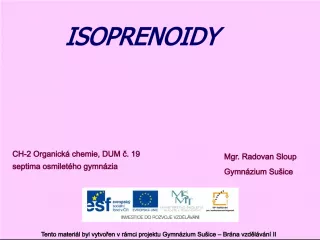Cyclic Voltammetry for Dopamine Detection


Learn how cyclic voltammetry is used to detect dopamine in vivo, a crucial neurotransmitter responsible for motor and cognitive functions, whose deficit causes Parkinson's disease. Dopamine plays a significant role in regulating reward and is increased by drugs of abuse like cocaine. Explore the structure of dopamine and how it is synthesized and released from dopaminergic neurons.
- Uploaded on | 0 Views
-
 fernandoacosta
fernandoacosta
About Cyclic Voltammetry for Dopamine Detection
PowerPoint presentation about 'Cyclic Voltammetry for Dopamine Detection'. This presentation describes the topic on Learn how cyclic voltammetry is used to detect dopamine in vivo, a crucial neurotransmitter responsible for motor and cognitive functions, whose deficit causes Parkinson's disease. Dopamine plays a significant role in regulating reward and is increased by drugs of abuse like cocaine. Explore the structure of dopamine and how it is synthesized and released from dopaminergic neurons.. The key topics included in this slideshow are cyclic voltammetry, dopamine neurotransmitter, dopaminergic neurons, motor function, cognitive function,. Download this presentation absolutely free.
Presentation Transcript
1. Cyclic Voltametry for the Detection of Dopamine in vivo
2. Dopamine Neurotransmitter small molecule chemical messenger Important for motor and cognitive functions Deficts in dopamine levels cause Parkinson Disease Regulates reward Dopamine increases after drugs of abuse like cocaine Structure of Dopamine. 4-(2-aminoethyl) benzene-1,2-diol
3. Dopaminergic Neurons Dopamine is synthesized in dopaminergic neurons and packaged into membrane bound vesicles Electrical action potential initiates the release of dopamine Dopamine vesicles undergo exocytosis Spills out into the extracellular space Can be detected The dompaminergic neuron can release dopamine into the extracellular space where its contents can be detected by target neurons.
4. Detection of Dopamine Exocytosis of dopamine from vesicle occurs on a millisecond time scale Sensor must be fast, sensitive, and selective since dopamine concentrations are low Fast scan cyclic voltametry is the dominant electrochemical technique used Dopamine Dopamine-o-quinone + 2 H +
5. Carbon Fiber Microelectrodes Carbon Fiber Microelectrodes (CFME) are electrodes in which a carbon fibers serve as the electroactive area Advantages: Carbon fibers are biological compatible to cells Small size (less than 10um in diameters) allows for implantation in vivo Commonly used with cyclic voltametry Carbon Fiber Microelectrode
6. Voltammetry Electrochemical technique in which the current (I) is measured as a function of voltage (E app ). There are several kinds: Linear Scan voltametry (Polarography) Differential pulse polarography Square-wave voltametry Cyclic Voltametry
7. Fast-scan Cyclic Voltametry 1.3 V -0.4 V 8.5 ms 100 ms 400 V/s Scan electrode from a holding potential to a switching potential and back at a high scan rate. Repeat these scans every 100 ms. Dopamine Dopamine-o-quinone + 2 H + As potential is ramped up, dopamine is oxidized to dopamine-o-quinone. As potential is ramped down, dopamine-o-quinone reduced back to dopamine.
8. Fast-Scan Cyclic Voltametry Fast scan rate cause a large background charging current due to charging the double layer. When dopamine is added (red line), the differences are small. The background current is stable and can be subtracted out to obtain a background- subtracted cyclic voltammogram for dopamine. The position of the peaks help identify the molecule being detected. oxidation reduction Cyclic voltammograms Dopamine present No dopamine Background-subtracted cyclic voltammogram of dopamine
9. Fast-scan cyclic voltametry -0.4 V 1.0 V -0.4 V 10 s -5 0 3 i, nA E vs Ag/AgCl -0.4 V 1.0 V -0.4 V 10 s -5 0 3 i, nA E vs Ag/AgCl Data can also be depicted as a color plot to show many CVs over time. Current is in color and shows when dopamine is present. dopamine oxidation dopamine reduction dopamine present
10. Results Electrically-Stimulated release in a rat Carbon-fiber microelectrode implanted in nucleus accumbens Nucleus accumbens regulates reward Electrically stimulate cell bodies in ventral tegmental area Size of dopamine evoked depends on frequency of stimulation Color plots look like dopamine
11. Results Spontaneous dopamine transients in a rat Spontaneous dopamine transients in a rat after cocaine Cocaine increases the concentration and the length of time for dopamine signaling.
12. Advantages Allows real-time detection of dopamine in behaving animals Can determine during what behaviors dopamine is released Can determine how drugs affect dopamine signaling in the brain












